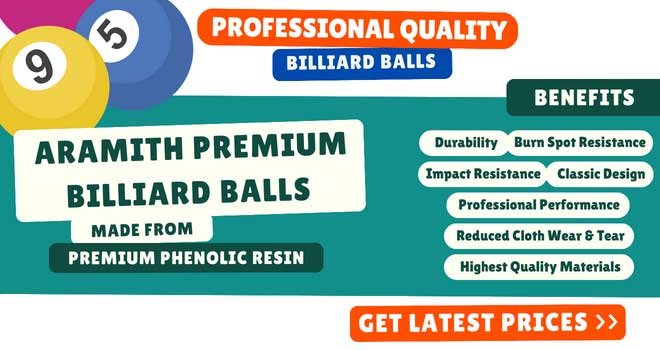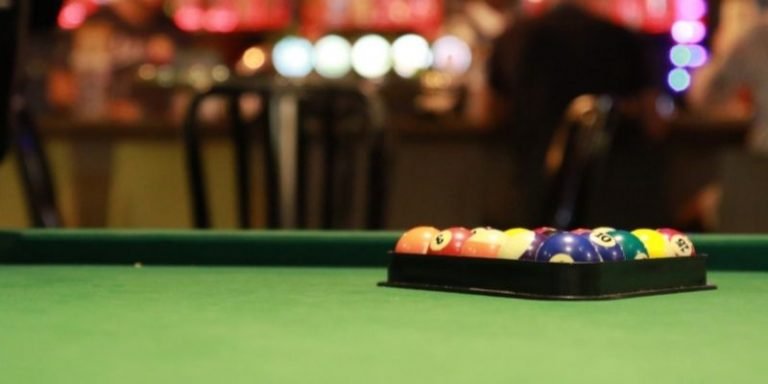How to Make Pool Table Felt Faster? (And What Affects Speed)

Improving the speed of your pool table felt can significantly enhance your billiards experience.
Whether you’re a casual player or a seasoned pro, the pace of the table can impact both the playability and enjoyment of the game.
In this comprehensive guide, we’ll explore various methods and tips to make your pool table felt faster, ensuring a smoother and more enjoyable game.
Key Takeaways
- Different materials affect the speed and playability of the felt.
- Regular cleaning and proper maintenance can keep the felt in top condition.
- Humidity and temperature play a crucial role in the felt’s performance.
- Consulting with experts can provide tailored solutions for your specific table.
The Quick Answer
| What you Need | What to Do |
|---|---|
| High-Quality Felt | Choose worsted wool felt for a smoother, faster surface. |
| Proper Installation | Ensure the felt is stretched and installed correctly, without wrinkles. |
| Regular Cleaning | Brush and vacuum the felt regularly to remove dust and debris. |
| Environmental Control | Maintain stable temperature and humidity to prevent felt damage. |
| Professional Refelting | Consider replacing old or worn felt professionally. |
| Quality Pool Balls | Use high-quality, well-maintained balls for reduced friction and faster play. |
How to Make Pool Table Felt Faster?
As we know there are a several things that can affect the speed. As such there is no one set way to make pool table felt faster.
It may be one slight change but it might also be a combination of things that will achieve a faster playing surface.
Typically, there are 7 ways to make pool table felt faster:
- Make sure the felt is tight and taut – re stretch the cloth if loosened
- Use an Iron on napped cloth
- Keep the playng surface clean and well maintained
- Use higher quality set of billiard balls
- Replace bad rubber cushions
- Refelt with a premium playing cloth
- Control the climate conditions around the pool table
What Affects Pool Table Speed?
There are many reasons as to why your pool table might be playing slower than you would like. Alot of them are tighly connected with also increasing the speed of the cloth.
The speed of pool table felt is influenced by several factors, including:
- The type of pool table
- The type of felt
- The quality of the felt
- Environmental factors
- The condition of the felt
- Age of the felt
- Felt tightness and installation
- Quality of the pool balls
- The cushions
Some things will restrict the maximum speed you can get out of the cloth, like for instance the condition and the type of felt you own, and below I will explain more.
The Type of Pool Table
In general there are two types of pool tables; slate and non slate.
If you want industry standard, professional performance, the first place to start is with a slate table.
A slate pool table is a must if you are a serious player, especially if you want a faster table.
No matter what you do, non slate pool tables will never play as fast, or perform as well as slate.
- Slate is cut from large sheets of rock and is an extremely durable material that’s impervious to water damage.
- It provides a consistent playing surface for the balls to roll on, often referred to as a true playing surface because it can be leveled to within 0.0001 inches tolerance.
The Type of Felt
Over time, wear and tear, such as pilling or fuzzing, slows a table down, no matter what type of felt covers the bed.
However, the type of felt, including its weave and thickness, greatly influences its speed.
There are mainly two types of playing cloth:
- Woolen
- Worsted
| Felt Type | Speed | Durability |
|---|---|---|
| Woolen – Recreational | Slower | High |
| Worsted – Professional | Faster | Moderate |
Woolen Cloth
Woolen cloth is thicker type of material and plays typically slower than worsted.
This is because the end of the felts fibers are exposed which creates a fuzzy and thicker type of felt.
It’s often found on recreational or home pool tables, and ironing woolen cloth, aka ‘napped’ cloth is great way to speed up the playing surface.
It’s important to go with the directional nap and iron on the lowest settings, usually the wool setting.
Ironing is much more effective on woolen than it is on the already smooth worsted cloth.
Worsted Cloth
Worsted cloth is recognized as the fasted pool table felt, commonly used in professional and tournament settings.
It is often referred to as a speed cloth and is more synonymous to American style pool tables.
Investing in high-performance felt is a straightforward way to increase table speed, while also achieving maximum durability and performance.
The Condition of the Playing Cloth
Regular cleaning and maintenance of pool table felt, keeping it free chalk dust, debris, and other particles, help to maintain a high performing playing surface.
However, if it is under performing, removing dirt and debris can also help SPEED it up if it has slowed down.
- Balls travel fastest on playing surface that has the least amount of resistance.
- Dust, dirt and other debris allowed to build up only serves to increase the level of resistance and creates more friction as they travel, which slows them down.
- Even slight inconsistencies can change the momentum of balls.
Age of the Pool Table Felt
Age can also be a factor, as older felt tends to slow down due to compacting of the fibers, including the general wear and tear
Replacing a worn playing cloth, which a higher quality felt, will significantly improve table speed.
Ball Quality and Cleanliness

While the balls themselves don’t directly change the speed of the felt, their condition and quality can influence general performance, which does include speed.
- Over time, balls can develop nicks, scratches, or become unevenly weighted, reducing the speed and predictability of shots.
- Dirty or chalky balls can also deposit debris on the felt, increasing friction and resistance.
- Regularly cleaning the balls can help maintain their smoothness and, by extension, the speed of play on the table
The quality and type of billiard balls used can also impact the speed of the game.
Professional quality balls, for instance from Aramith, made from top tier materials, create less friction and reduced wear and tear in the cloth. Ultimately maintaining a a high level of speed in the long term.
The Tightness of the Stretch
The method of felt installation can have a big effect on how fast the playing cloth performs.
- During installation it’s important to get a tight stretch on the cloth, and it’s not always easy to do.
- Some technicians have specially made wide grip pliers that get an extremely tight grip to achieve the necessary tight stretch on the material.
The reason it is important; a tight cloth is a faster cloth.
A relaxed playing surface, one that is loose or not fitted properly and started to wrinkle, will play significantly slower.
Environmental factors
Maintaining a stable environment around your pool table is of utmost importance.
Avoid extreme changes and wild temperature swings to make the playing surface faster.
Humidity and Its Effects
- Moisture Absorption: Pool table felt, especially those made from wool, can absorb moisture from the air. In high humidity environments, the felt becomes slightly damp, increasing friction between the felt and the balls.
- Slower Ball Movement: This increased friction results in slower ball movement. The balls may not roll as freely or as far as they would on a drier felt.
- Inconsistent Play: Humidity can also cause the felt to swell or expand slightly, leading to an uneven playing surface, which can affect the predictability and consistency of ball movements.
- Preventive Measures: Using a dehumidifier in the room where the pool table is located can help in maintaining a consistent level of humidity, thereby preserving the speed and condition of the felt.
In humid locations I can’t stress the importance a of good humidifier, like the budget friendly cool mist humidifier.
It allows you to set optimal levels, works effortlessly in the background in both big and small room sizes to preserve the longevity of your pool table.
Temperature and Its Impact
- Felt Tension: Temperature can affect the tension of the felt. In colder conditions, the felt can contract, becoming tighter, while in warmer conditions, it might expand and become looser.
- Effect on Speed: A tighter felt (in colder conditions) can offer a slightly faster play as there is less resistance against the balls. Conversely, a looser felt (in warmer conditions) might slow down the play.
- Consistency Issues: Fluctuating temperatures can lead to inconsistent felt tension, making the playing experience unpredictable. This is especially noticeable in environments where the temperature changes significantly over short periods.
- Optimal Temperature Maintenance: Maintaining a stable room temperature can help in preserving the felt’s condition and ensuring consistent speed and playability.
Bad Rubber Cushions
The rubber cushions on a pool table, while not directly affecting the speed of the felt, play a significant role in the overall dynamics and speed of the game.
The condition of the cushions, which line the inner edges of the pool table, impact how the balls rebound off the rails, influencing the pace and flow of play.
- When they are in good condition, balls rebound back off the rails and towards the center of the table as expected.
- If they go bad, the speed of the playing cloth is noticeably affected.
To keep its natural spring, the rubber needs to flex.
If they lose their responsiveness, balls won’t rebound in the same way and will slow down.
This can happen with age, but can also happen as a result of extreme temperatures.
Replace Bad Cushions to Increase Pool Table Speed
If the balls are not bouncing off the cushions as they should be you may need to replace them.
No matter how much you try to make the pool tables felt faster, if the cushions are bad the table will feel and play slow.
- You can test the responsiveness yourself by pressing down on them with your finger tips.
- Aged rubber, which can happen naturally but over many many years, will feel soft and spongy.
- If the climate conditions are the cause of the dead cushions they will feel much more solid and hard as a rock to touch.
They are sometimes also referred to as ‘dead cushions’ and that could very well be your problem, in most cases though it’s less likely to be.
How Do You Measure the Speed of a Pool Table?
Testing the speed of a pool table is somewhat short of standardization and there is no industry wide tool.
There is a device however that is easily made and can give a good accurate reading of felt speed.
- A similar type of measuring device as the Stimpmeter used in golf to test how fast a putting green is can be used.
- The very reliable measuring device can be tweaked and used on pool tables to measure speed.
The sloped device allows a ball to roll off and then measured to see how far it rolls it without touching the foot rail.
It is incredibly simple and repeatable way to measure the speed of a pool table.
References
https://abovehouse.com/best-pool-table-felts/








